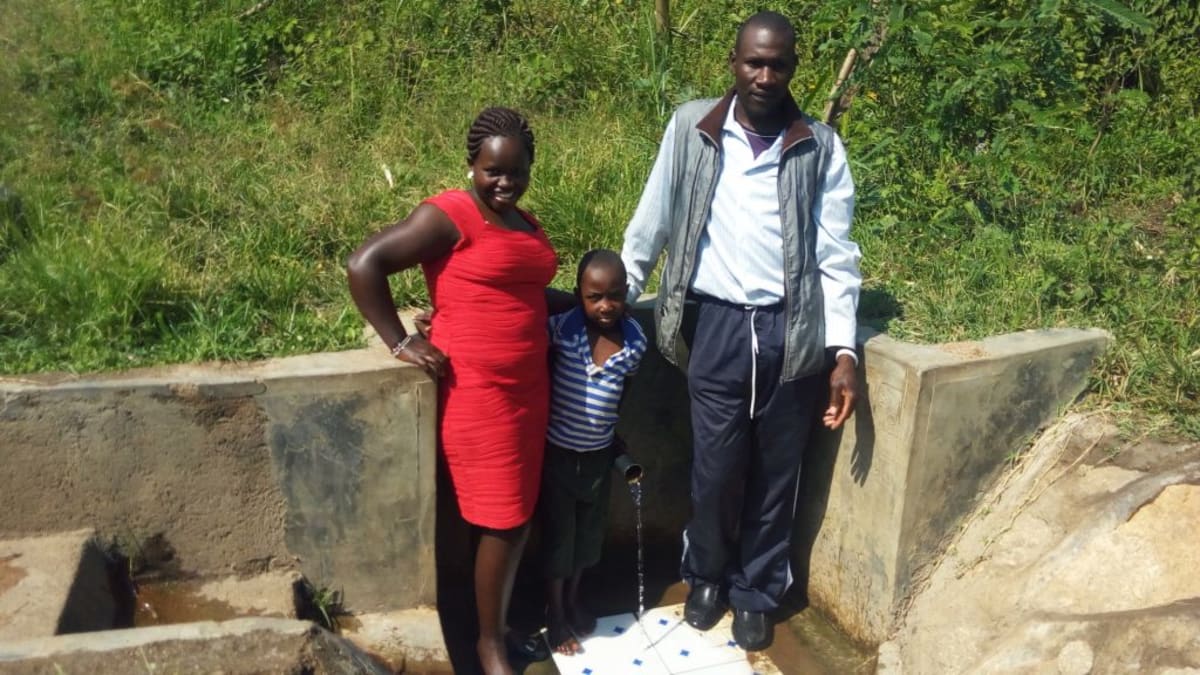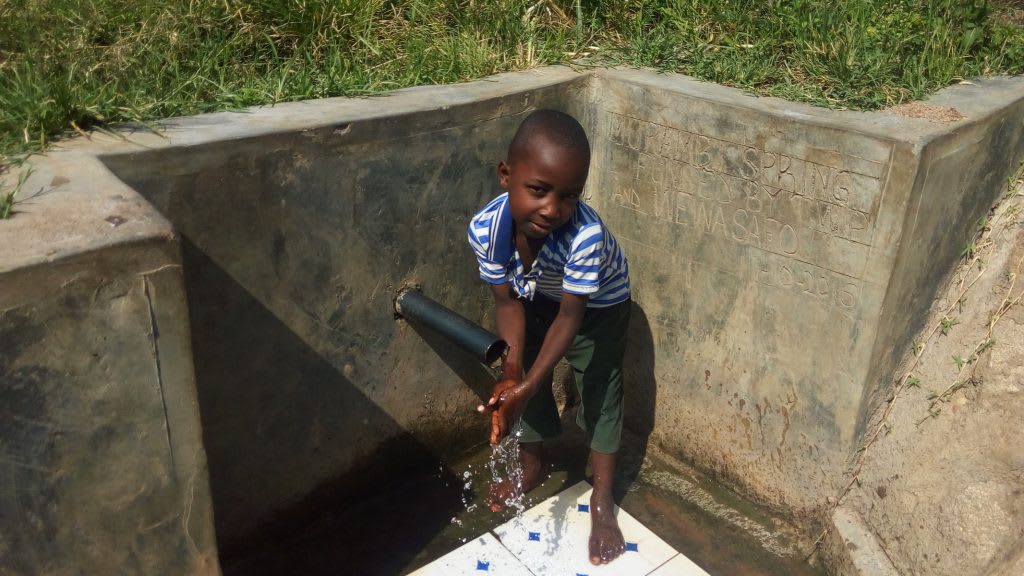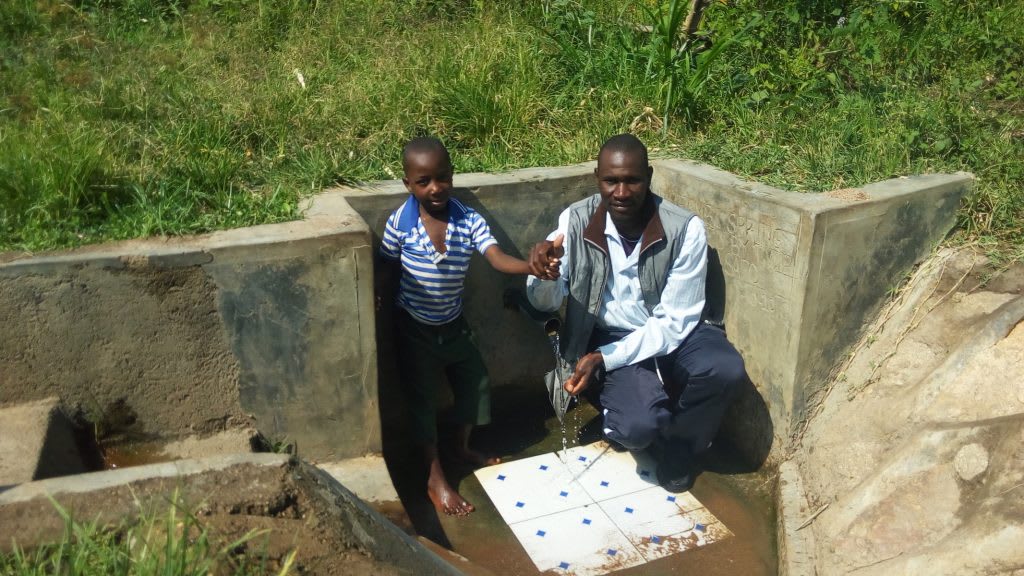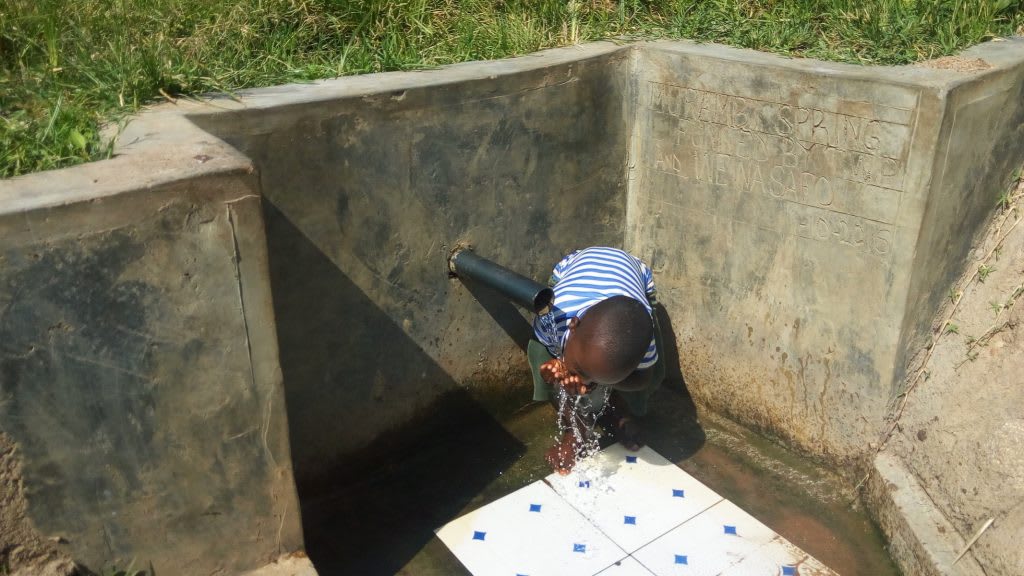This project is a part of our shared program with Western Water and Sanitation Forum (WEWASAFO). Our team is pleased to directly share the below report (edited for clarity, as needed).
Welcome to the Community
It is early in the morning at about 5AM in Ebung'ayo Village when a young girl known as Nafuma gets up and puts on her school uniform. Before she leaves the house, her mother requests her to run to the nearby spring to fetch one jerrycan of water. She obediently picks up an empty jerrycan and runs to the spring. She manages to fill her jerrycan and carefully lifts it to balance on her head. She takes her first step and while trying to take her next step away from the spring, she slips and falls backwards. Her only uniform is now soaked. Time passes as she waits for the sun to dry her uniform. She quietly sits under a tree worried of what punishment she will be given for missing school.
This is just one of many cases in this village for girls, women and other children who slip and fall as they fetch water. Some of them are even harassed and insulted by young men who bring their cows to drink water at the same spring. The young men let their cows step into the water before the girls and women can fill their containers. They have to either wait until the water is clean or go back home with empty containers and return later.
Ebung'ayo Village is located in Kakamega County, Kenya. It is home to 315 people from 45 different households.
There are a lot of young men in this village who have a very low level of education. These men are looking for any way to earn an income, roaming around the village hoping someone will hire them for manual labor. Despite the high unemployment rate and lack of education here, people are friendly and hospitable.
Water Situation
The people of Ebung'ayo Village rely on Murambi Spring for water. It's close to all of the homesteads, and water doesn't cease to flow even during the driest seasons.
The community has placed a large stone at the side of the spring on which they balance to fetch water. Each person brings a small cup that they can dip in the spring to bail water and fill their water container, which is normally as large as they can carry. The water is brought home and used for drinking, cooking, bathing, and watering animals.
When home, water is separated into different containers by use. Drinking water is kept in covered pots either in the kitchen or living room. The rest of the water is dumped in larger plastic barrels and saved for cleaning and watering animals.
We know that Murambi Spring is contaminated because of the numerous reports of waterborne disease. Our visit to the spring confirmed this fact; the water is out in the open with no barriers to protect it from erosion, surface runoff, and animals. Some people don't even bother to balance on the rock, but step directly into the water as they fill their containers.
Sanitation Situation
Under half of the households in Ebung'ayo Village have a pit latrine. These are made of cracked mud walls and dirt floors. The same low number of people have bathing rooms for personal hygiene, hand-washing stations, dish racks, or clotheslines.
People here normally pick a spot in the back of their compound to throw garbage. This is separated into piles to burn and to compost. The compost will be used on the farm as a fertilizer.
Plans: Hygiene and Sanitation Training
Community members will attend hygiene and sanitation training for at least three days. This training will ensure participants are no longer ignorant about healthy practices and their importance. The facilitator plans to use PHAST (Participatory Hygiene and Sanitation Transformation), CLTS (Community-Led Total Sanitation), ABCD (Asset-Based Community Development), group discussions, handouts, and demonstrations at the spring.
Training will also result in the formation of a committee that will oversee operations and maintenance at the spring. They will enforce proper behavior around the spring and delegate tasks that will help preserve the site, such as building a fence and digging proper drainage.
Plans: Sanitation Platforms
On the final day of training, participants will select five families that should benefit from new latrines.
Training will also inform the community and selected families on what they need to contribute to make this project a success. They must mobilize locally available materials, such as bricks, clean sand, hardcore, and ballast. The five families must prepare by sinking a pit for the sanitation platforms to be placed over. All community members must work together to make sure that accommodations and food are always provided for the work teams.
Plans: Spring Protection
Fetching water is predominantly a female role, done by both women and young girls. Protecting the spring and offering training and support will therefore help empower the female members of the community by giving them more time and efforts to engage and invest in income-generating activities.
In addition, protecting the spring will ensure that the water is safe, adequate and secure. Construction will keep surface runoff and other contaminants out of the water.

 Protected Spring
Protected Spring
 Rehabilitation Project
Rehabilitation Project






























